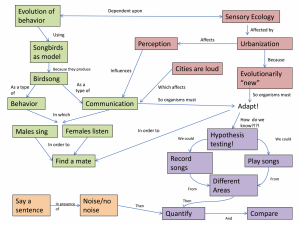Digital tools are an increasingly common way for instructors to engage students in the writing process. The use of these tools can be a particularly effective strategy for instructors to facilitate low stakes writing, which is a core WAC concept. In their personal lives, students likely use technology such as social networking sites and messaging apps to communicate with each other on a regular basis. Thus the introduction of this technology into the classroom represents a natural extension, and a comfortable medium for many students.
In 2013 the Pew Research Center released a report in which they asked teachers about the use of digital tools in their instruction. These instructors cited three main ways in which digital technology can benefit student writing. These ways are:
- digital technologies enable students to share their writing with a larger and more diverse audience;
- digital technologies provide students with the opportunity to collaborate to a greater extent;
- digital technologies facilitate creative expression on the part of students.
One digital tool that instructors can use in their classes to encourage low stakes writing is a discussion board. Discussion boards allow students to express themselves in an interactive manner. Students are put in a situation in which they have to articulate an opinion and defend their position against other students who may disagree.
When organizing a discussion board, the instructor must balance the desire for students to express themselves freely with the need to advance course objectives. If the discussion board is set up correctly, this balance can be achieved. There are a few things instructors should keep in mind when setting up a discussion board:
- Good topic questions are key. This is a fundamental step to stimulate a lively discussion. The question should be tied to course outcomes. Further, there are many types of high quality questions. For example, one type is a comparison-type question where the instructor asks the students to compare themes or issues and take a stand. This is a natural way to create debate amongst students.
- Maintaining a flow to the discussion is critical. It is the instructor’s role to make sure that the discussion is staying on topic and that students are not engaging in unproductive dialogue or conflict. This might require the instructor to reframe the question or ask more probing questions, particularly if the discussion has hit a lull. It also requires bringing closure to the discussion with some type of summary that ties the discussion to course content.
- High quality, widespread participation is the goal. To this end, instructors might want to make participation in a discussion board part of the final grade. However, instructors will also want to be clear about what represents high quality participation versus comments for the sake of comments.
These are just some of the things to keep in mind when organizing a discussion board, and certainly a discussion board has its unique challenges. Nonetheless, discussion boards represent one interactive and fun way in which instructors can encourage students to write more. It also may be a particularly effective way to elicit participation from shy or typically quiet students.






